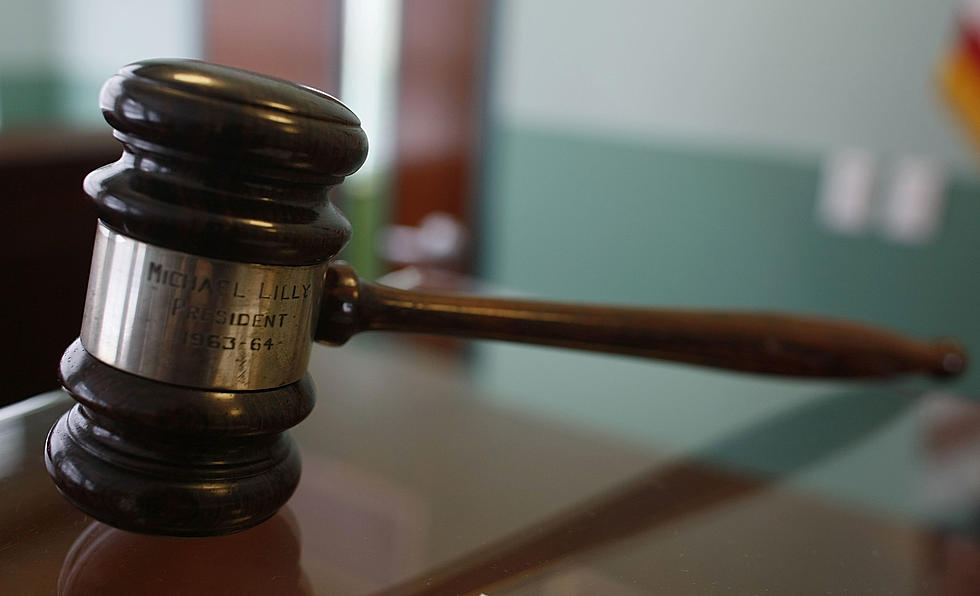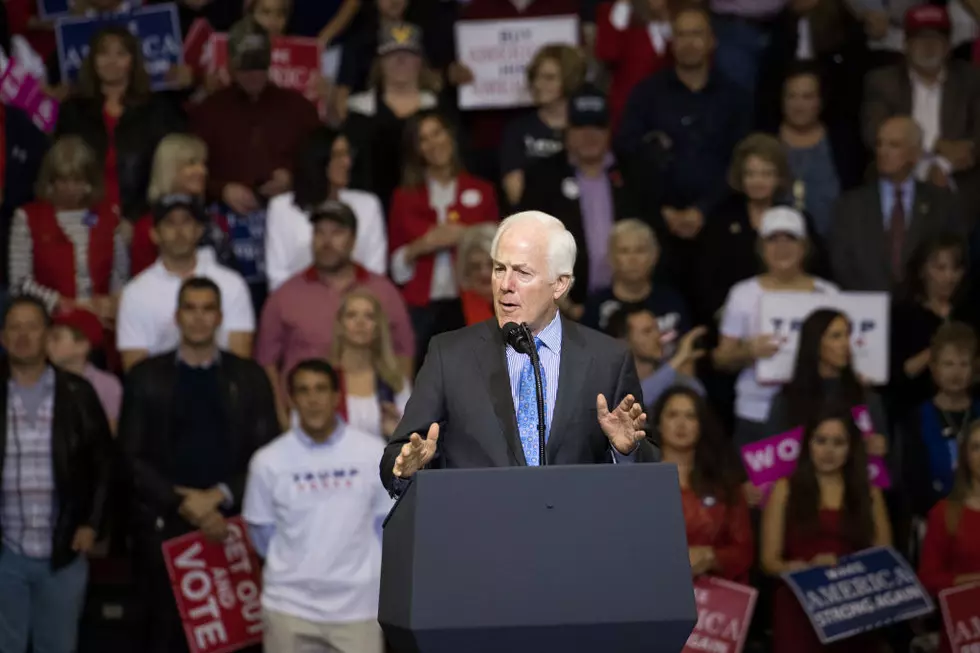
Chad’s Morning Brief: Supreme Court Upholds Ban on Affirmative Action, The Press Might Be Moving Past Wendy Davis, and Other Top Stories
Here is your Morning Brief for the morning of April 23, 2014. Give me your feedback below and tune in to The Chad Hasty Show for these and many more topics from 8:30 to 11am. Remember, you can listen online at KFYO.com or on your iPhone/Android with the radioPup App.
Important Election Dates:
Early Voting for City and School Board Election: April 28 – May 6
Election Day for City and School Board: May 10
Early Voting for GOP and Dem. Primary Runoff: May 19 – May 23
Election Day for GOP and Dem. Primary Runoff: May 27
Affirmative Action
The Supreme Court ruled yesterday that states can ban affirmative action according to The Hill. The decision has sparked reaction from both sides of the aisle.
The Supreme Court on Tuesday ruled that states have the right to ban the consideration of race in the college admission process, dealing another defeat to advocates of affirmative action.
In a 6-2 ruling, the justices upheld a Michigan ballot initiative known as Proposal 2 that was approved in 2006 and changed the state’s constitution to prohibit public colleges and universities from considering race.
Seven other states — Arizona, California, Florida, Nebraska, New Hampshire, Oklahoma and Washington — have similar policies in place.
Justice Anthony Kennedy wrote the plurality opinion in the case, Schuette v. Coalition to Defend Affirmative Action, and said the court determined it does not have the authority to override the will of Michigan voters when it comes to affirmative action.
“[We] concluded that there is no authority in the Federal Constitution or in this Court’s precedents for the Judiciary to set aside Michigan laws that commit to the voters the determination whether racial preferences may be considered in governmental decisions, in particular with respect to school admissions,” he wrote.
“This case is not about how the debate about racial preferences should be resolved,” Kennedy wrote. “It is about who may resolve it.”
Chief Justice John Roberts and Justice Samuel Alito joined Kennedy on the ruling. Justices Antonin Scalia, Clarence Thomas and Stephen Breyer concurred.
Justice Sonia Sotomayor, the first Hispanic Supreme Court justice, wrote a dissent backed by Justice Ruth Bader Ginsburg that said the decision crushes minority rights.
“Without checks, democratically approved legislation can oppress minority groups," wrote Sotomayor.
Judges "ought not sit back and wish away, rather than confront, the racial inequality that exists in our society," she wrote.
Justice Elena Kagan recused herself from the case, possibly because she worked on affirmative action during her time as solicitor general. She has also served in higher education as dean of Harvard Law School.
White House press secretary Jay Carney declined to weigh in on the ruling, but said President Obama “believes that diversity in the classroom is important for students, campuses and schools.”
“As you know, the president has said that while he opposes quotas and thinks an emphasis on universal and not race-specific programs is good policy, considering race, along with other factors, can be appropriate in certain circumstances,” Carney said.
Congressional Black Caucus Chairwoman Marcia Fudge (D-Ohio) said the ruling sets a "dangerous precedent."
"Today’s Supreme Court decision reinforces that preferential treatment based on privilege in our society can continue, while affirming that public policies that level the playing field for the disadvantaged are not a priority," she said in a statement.
"This is another disappointing decision by the Supreme Court that removes federal protection against racial discrimination in our communities, and allows discrimination to occur more frequently on campuses across the country and in other sectors of our society.”
The Supreme Court’s decision is another setback for supporters of affirmative action, which became prominent in the wake of the 1960s civil rights movement and has become a politically charged issue.
Former President John F. Kennedy was the first to use the term affirmative action in 1961 when he signed an executive order directing government contractors to take "affirmative action to ensure that applicants are employed, and that employees are treated during employment, without regard to their race, creed, color, or national origin.”
The debate over affirmative action reached a boiling point in 2003, when the high court decided two separate affirmative action cases dealing with the University of Michigan. The rulings were the first time in 25 years the court had explored the issue.
In a win for affirmative action supporters, the court narrowly ruled in a 5-4 decision that Michigan's law school could consider race in admissions decisions, so long as it was weighed against other factors.
Justice Sandra Day O’Connor, who is now retired, wrote the majority opinion for the case, Grutter v. Bollinger, and said the 14 Amendment’s Equal Protection Clause does not prohibit the school from using a narrowly tailored race criteria in admissions decisions to create a diverse student body.
In the second case, Gratz v. Bollinger, the court ruled 6-3 that the university couldn’t include race in a points system for undergraduate admissions.
Before Tuesday's decision, the high court had last ruled on affirmative action in June 2013, when the justices said states could institute affirmative action programs if they choose to do so, but they need to be pass a test of “strict scrutiny” whereby no other factors would contribute to diversifying the student body.
Mark Rosenbaum, the attorney who argued the case for the American Civil Liberties Union (ACLU) last October, said Tuesday’s decision means minority students can’t compete on the same playing field as other students.
“Proposal 2 unfairly keeps students from asking universities to consider race as one factor in admissions, but allows consideration of factors like legacy status, athletic achievement and geography," Rosenbaum said in a statement.
Since Proposal 2 took effect, the African-American population at the University of Michigan at Ann Arbor has dropped 33 percent even though overall enrollment has increased 10 percent, the ACLU said.
I hope this will lead to more states banning affirmative action.
Move Over Wendy Davis
It's been pretty rocky lately for the Wendy Davis campaign. Low polling numbers and bad press plus the feeling among many, including Democrats, that Davis just isn't ready for this type of race have all hurt Davis' chances of being the liberal hero in Texas.
That brings us to a story from CNN. The headline, Meet the woman who could turn Texas purple. They aren't talking about Wendy Davis though. Instead CNN is featuring Leticia Van de Putte.
When Leticia Van de Putte walked into the storied Willard Hotel one block from the White House last month, she didn't invoke the stares of gaping tourists or eager handshakes from power-seeking staffers.
Instead, she rolled her own suitcase wearing Texas Longhorn cowboy boots -- an accessory she was happy she brought from Texas on that snowy March day in the nation's capital.
Van de Putte gave no hints that she was running for lieutenant governor, the second-highest office in Texas -- and some would argue the most powerful. She was deferential to hotel staff and eagerly arranged oversized chairs to set up for the interview -- rare in a town where elected officials have staff at their beck and call, even to dial numbers on their mobile phones.
The San Antonio state senator could accomplish what no Democrat has done in 20 years: win statewide office.
The pharmacist has been a power broker during her nearly 25 years in the state legislature. In 2003, she led the dramatic 45-day walkout that Senate Democrats staged over the Republican redistricting plan. The lawmakers bolted to New Mexico, delaying a vote on the plan, although Republicans were eventually able to pass it.
Van de Putte doesn't elicit the same star power or national intrigue as Wendy Davis, her state Senate colleague at the top of the ticket. Davis grabbed national headlines last June when she staged an 11-hour filibuster in the Texas Senate that blocked restrictive abortion legislation from being passed.
That day was a big moment for Davis, propelling her into the national spotlight and into the gubernatorial race. It also re-established some relevance for Texas Democrats in a state dominated by Republicans.
For Van de Putte it was a defining day. As Davis' filibuster charged on into the night, Van de Putte missed most of it because she was at the funeral of her father, who had been killed in a car accident. After a mournful day, she decided to join her colleagues at the State House.
"I remember her walking onto the Senate floor. I could see it in her face. She was just drained," said Grace Garcia, a friend and political ally who was in the spectator gallery. "She did it because she wanted to support the women in Texas."
The emotionally exhausted Van de Putte attempted to speak on the Senate floor but the Republican majority had turned off her microphone.
Finally she raised her voice to be heard, asking, "Did the President hear me or did the President hear me and refuse to recognize me?"
"At what point must a female senator raise her hand or her voice to be recognized over her male colleagues?" she continued.
The gallery, filled with women's rights advocates, erupted in prolonged cheers and applause, igniting a new wave of energy into the fierce debate over abortion restrictions.
"Something was unleashed at that moment. It just exploded. People started clapping and it didn't stop," Garcia said.
Van de Putte was energized from the cheers of support that June night. But her political profile received an even greater boost as political operatives in the state increasingly looked to her for higher office.
Seems like Wendy Davis is old news.
Other Top Stories:
These and many more topics coming up on today’s edition of The Chad Hasty Show. Tune in mornings 8:30-11am on News/Talk 790 KFYO, streaming online at kfyo.com, and now on your iPhone and Android device with the radioPup App. All guest interviews can be heard online in our podcast section after the show at kfyo.com.
More From News/Talk 95.1 & 790 KFYO








![Republicans Must Confirm Trump’s Supreme Court Nominee [Opinion]](http://townsquare.media/site/192/files/2020/09/GettyImages-1273932974.jpg?w=980&q=75)
